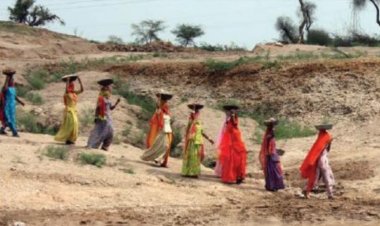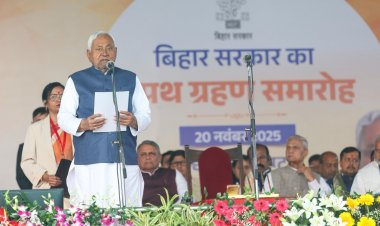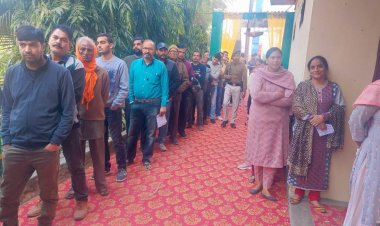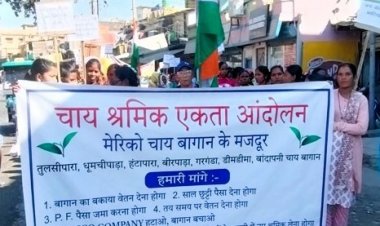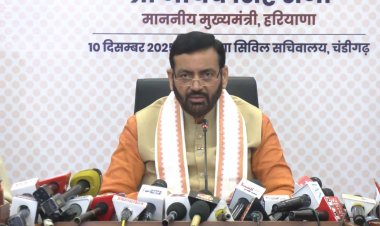CSRTI Pampore signs MoU with SKUAST-Jammu
It was a historic day for scientists, academicians and especially sericulture farmers of Jammu and Kashmir (J&K) when the Central Sericultural Research & Training Institute (CSRTI), Pampore, Central Silk Board, signed an MoU with the Sher-e-Kashmir University of Agriculture Sciences & Technology of Jammu (SKUAST-Jammu). The pact was inked at Jammu during SKUAST-Jammu Krishak Mela ’22 .
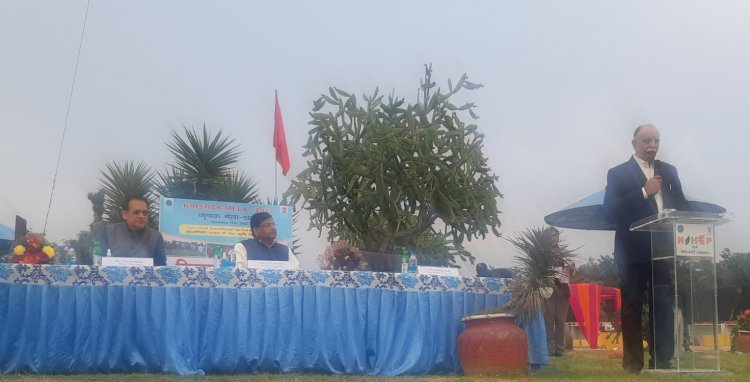
SKUAST Campus, Jammu
It was a historic day for scientists, academicians and especially sericulture farmers of Jammu and Kashmir (J&K) when the Central Sericultural Research & Training Institute (CSRTI), Pampore, Central Silk Board, signed a Memorandum of Understanding (MoU) with the Sher-e-Kashmir University of Agriculture Sciences & Technology of Jammu (SKUAST-Jammu).
The pact was inked at Jammu during SKUAST-Jammu Krishak Mela ’22 on November 19.
Prof JP Sharma, Vice Chancellor of SKUAST-Jammu, and Dr Sardar Singh, Director-In-Charge, CSRTI, Pampore, Central Silk Board, inked the document for the respective institutions.
The signing ceremony was held in the presence of a large number of distinguished faculties of SKUAST-Jammu, including Dr Pradeep Wali, Director Research, SKUAST-Jammu; Dr Mahital Jamwal, Associate Director Research, SKUAST-Jammu; Dr Santosh Kumar Magdam and Dr Vinod Singh, scientists at the Regional Sericultural Research Station, Central Silk Board, Jammu; and scientists from regional sericultural stations besides researchers, students and stakeholders.
Dr Sardar Singh highlighted the importance of the MoU and gave a brief account of the sericulture history of J&K.
He said that J&K was one of the traditional sericulture states/UTs of the country and was known for the production of quality bivoltine silk, which is in short supply in India. Bivoltine silk is a high-quality mulberry silk produced in India as an import substitute silk.
India is the second largest producer of silk in the world after China but the bulk of mulberry silk is produced from improved crossbreeds as compared to bivoltine breeds. However, the potential of bivoltine silk has not been fully exploited in J&K and there are large untapped areas, especially in the Jammu region.
Today around 27,000 families are engaged in sericulture practices. Of these, about 19,000 are from Jammu province. J&K produces about 7 lakh kg of silk cocoon annually though the potential is estimated to be around 35 lakh kg.
Low cocoon productivity is one of the hindrances in generating potential income through sericulture where R&D intervention and technology transfer can play a significant role to overcome this situation.
Inadequate extension support is another major constraint coming in the way of further expansion of sericulture in new areas and bringing more farmers under seri-practices where sericulture departments of J&K and KVKs of SKUAST-Jammu can play a pivotal role.
Singh also said that sericulture is a vital subsidiary occupation in J&K and can be practised along with traditional crops, thus providing an opportunity for additional cash income to marginal and small farmers of the UT.
It has the shortest gestation period as compared to other cash crops and every single cocoon has an assured demand-driven market. Good-quality dry cocoons can fetch up to Rs 2000/kg price.
Singh expressed gratitude to Prof Sharma for providing this opportunity and leading the way forward for R&D collaborations in the field of sericulture science under sub-tropical conditions of the Jammu region, which has a huge potential for sericulture expression, productivity improvement, R&D interventions and diffusion of technology together with SKUAST-Jammu Central Silk Board and Sericulture Development Department of J&K and contribute to making India AtmaNirbhar (self-reliant) in silk production.
In his address, Prof Sharma emphasized the importance of emerging trends in agriculture practices and the need for inter-institutional collaborations for the benefit of the farming community of the country.
He expressed happiness over the signing of the MoU and said that both SKUAST-Jammu and CSR&TI Pampore would make it an operational MoU in the days to come so that the purpose and scope of this MoU were realized in letter and spirit.
Both organizations can exchange information, develop new technologies, use facilities, guide research students and address farmers' needs so that more and more farmers are benefited and adopt best practices.
Prof Sharma said that in today’s fast track of knowledge sharing, innovative ideas had changed the entire process of the agri-production chain and sericulture was not an exception.
He congratulated Director, CSR&TI Pampore, and Director Research, SKUAST-Jammu, and their teams for working out the MoU and hoped that together they would come out with some innovative and farmer-friendly research work in the future.
Dr Pradeep Wali, Director, Research, presented the welcome address and Dr Mahital Jamwal, Associate Director, Research, proposed a vote of thanks.



 Join the RuralVoice whatsapp group
Join the RuralVoice whatsapp group

















